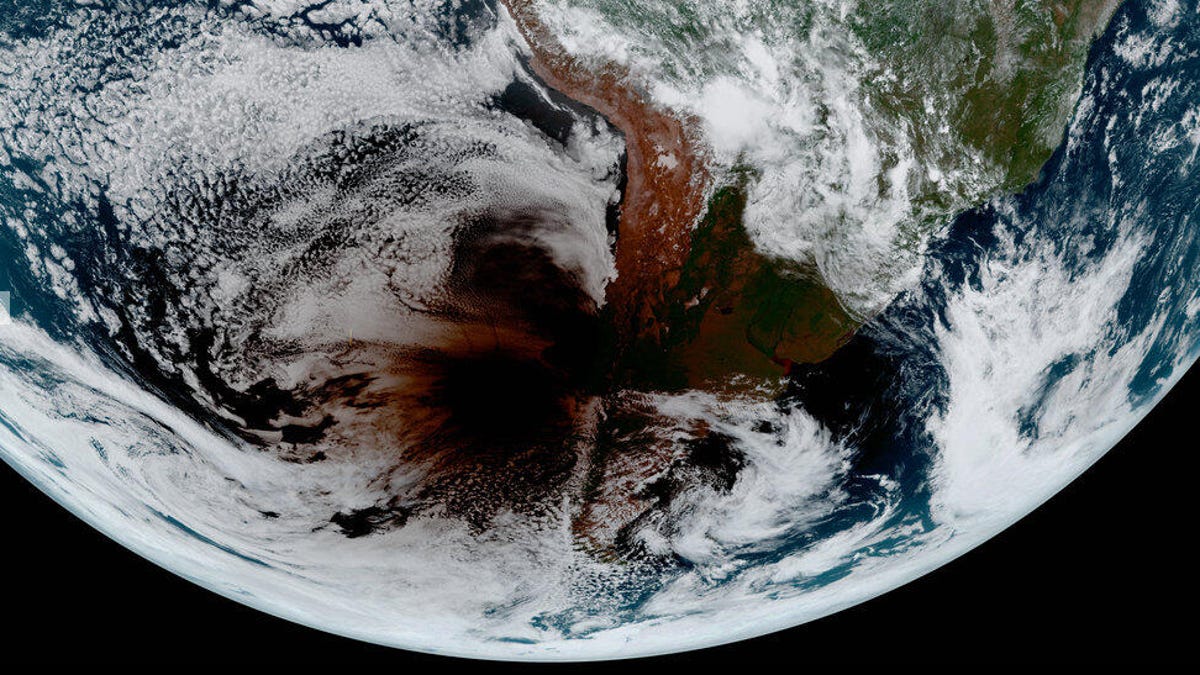Space view shows a moon shadow on Earth during Monday's solar eclipse
It wasn't just humans watching the effects of the total solar eclipse of 2020.
A thin slice of South America got treated to a total solar eclipse on Monday. Most of the world was able to enjoy the action through livestreams, but a National Oceanic and Atmospheric Administration (NOAA) satellite got a very different view of the event.
While humans were looking at the sun (while exercising solar safety precautions), the Goes-East satellite kept its eyes on Earth and witnessed the moon's shadow moving across oceans and land.
The NOAA Satellites Twitter account shared an eclipse GIF. It's a glorious swirl of blue water, brown and green land, white clouds and the dark shadow in motion.
Today's total #SolarEclipse was the only total solar #eclipse of the year. Although it was mainly visible from Earth in parts of South America, #GOESEast had a perfect view of the moon's shadow moving across the Earth. pic.twitter.com/AlU0E8eGsW
— NOAA Satellites (@NOAASatellites) December 14, 2020
The satellite images highlight the number of clouds in the viewing area, meaning not everyone got a very clear look at the event. "Although it was mainly visible from Earth in parts of South America, Goes East had a perfect view of the moon's shadow moving across the Earth," NOAA wrote.
You can catch some more traditional footage of the eclipse by revisiting some of the earthly livestreams from Monday. This will have to last you. The next total solar eclipse -- which will be visible in Antarctica -- won't come along until December 2021.


